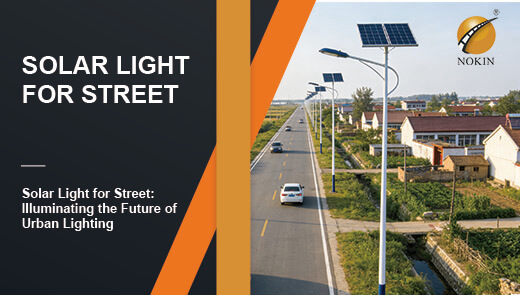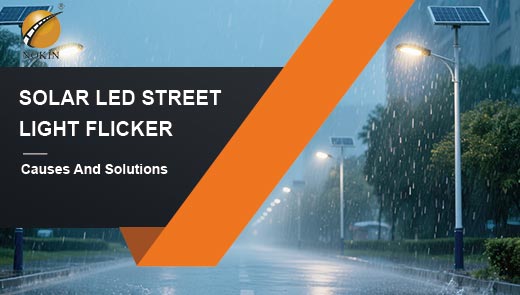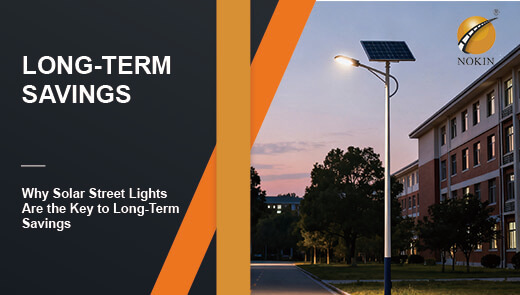Why is Commercial Solar Lighting Gaining Popularity
In the wave of global energy transition and sustainable development, commercial solar lighting is coming into the public's view at an alarming rate, from city streets to business parks, from public parking lots to leisure parks, the figure of solar lighting equipment can be seen everywhere. This phenomenon is no accident, behind the technical innovation, economic considerations, environmental protection needs and other elements of the joint role of the results. Next, we will explore the logic behind the popularity of commercial solar lighting.
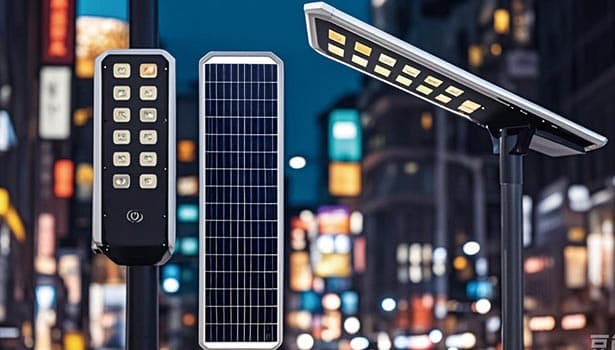
Understanding Solar Lighting Technology
Evolution of Solar Lighting Technology
Over the past few decades, solar lighting technology has made the leap from laboratory concepts to large-scale commercial applications. Early solar lighting equipment due to low conversion efficiency, poor energy storage capacity, difficult to meet the actual demand. However, with breakthroughs in the development of photovoltaic materials, as well as advances in battery technology and intelligent control technology, solar lighting systems are now able to operate stably and efficiently. Its core principle is the use of photovoltaic (PV) panels, through the photoelectric effect of solar energy into electricity, and stored in the battery, to be at night or when the light is insufficient to supply power to the lighting equipment, to form a set of self-sufficient energy system.
Commercial Solar Lighting System Components
Solar panels:
The role of solar panels is to receive sunlight and convert it into electricity, the performance of solar panels directly determines the power generation efficiency of the lighting system. Nowadays, the common solar panels are monocrystalline silicon and polycrystalline silicon, of which monocrystalline silicon solar panels have higher conversion efficiency, but they are also more expensive.
Batteries:
Batteries are responsible for storing the power generated by solar panels and releasing it at night or under low light conditions to ensure that the lighting continues uninterrupted. Commonly used batteries for commercial solar lighting systems are lithium batteries and lead-acid batteries, of which lithium batteries have a high energy density and a long lifespan, but are more expensive than lead-acid batteries.
LED luminaires:
LED luminaires are chosen for solar street light systems because they are energy efficient, have a long service life, and can significantly reduce replacement frequency and maintenance costs.
Control system:
Intelligent control system gives solar lighting system a “smart brain”. By integrating motion sensors, light-sensitive components, etc., the system can realize automatic dimming, timed switching and other functions, further enhancing energy utilization efficiency and ease of use.
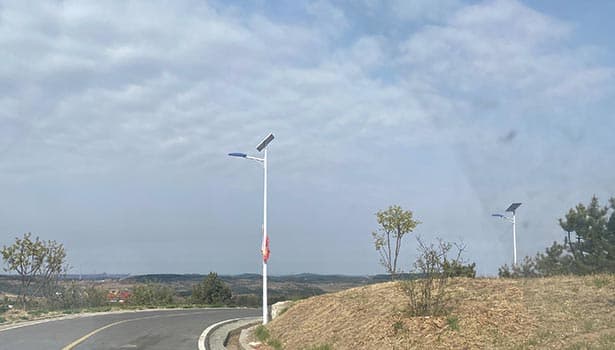
Benefits of Commercial Solar Street Lights
Economic Cost Advantages
Significant reduction in energy costs
The most direct economic benefit of commercial solar lighting is reflected in the significant reduction in energy costs. While traditional lighting systems rely on grid power and face high electricity bills in the long run, solar lighting captures free solar energy through photovoltaic panels, completely eliminating the reliance on traditional electricity. In a medium-sized commercial parking lot, for example, traditional lighting can cost thousands of dollars per month, while the installation of a solar lighting system will bring long-term energy costs close to zero, and the cumulative savings in electricity costs can significantly reduce the burden on business operations. This advantage is especially applicable to 24-hour operation of commercial scenes (such as logistics parks, gas stations, etc.), to achieve the true meaning of "zero electricity cost lighting.
Installation and maintenance cost advantages
At the level of infrastructure construction, commercial solar lighting systems have the unique advantage of being free of wiring and easy to install. No need to excavate pavement, laying cables and other complex processes, only need to fix the photovoltaic panels and lamps, the installation cost is reduced by more than 50% compared with traditional lighting. In addition, the life of the core components of the system (LED lamps, solar panels) far exceeds that of traditional equipment:
LED lamps: life expectancy of up to 50,000 hours or more, no need to be replaced in 10 years under normal use
Solar panels: only need to remove dust regularly (recommended once a quarter), no complex maintenance needs
This "low installation cost + low maintenance frequency This “low installation cost + low maintenance frequency” model dramatically reduces long-term investment, especially for small and medium-sized commercial projects with limited budgets.
Policy incentives to support
To accelerate the popularization of renewable energy, governments have launched unprecedented solar lighting special subsidy policies:
United States: enterprises can enjoy federal investment tax credits (ITC), up to 30% of the total cost of the system (applicable to projects installed before 2025)
China: local governments to provide value-added tax is levied as a rebate, special subsidies (eg, Shenzhen subsidies 30% of the cost of equipment for eligible projects) (e.g., Shenzhen subsidizes 30% of equipment costs for eligible projects)
EU: Implementing the “Green Transition Fund”, which provides up to 50% initial investment subsidy for commercial solar lighting projects
These policies directly reduce the threshold of initial investment for enterprises, and part of the projects can even cover 50%-70% of the upfront costs with subsidies, which significantly improves the return on investment (ROI).
Upgraded Performance and Efficiency
Highly efficient and stable all-weather operation
The commercial solar lighting system adopts high-conversion efficiency photovoltaic panels (monocrystalline silicon panels ≥20% efficiency) and large-capacity lithium batteries, which can maintain stable power supply for 3-5 days even under continuous rainy weather. With intelligent light control technology, the system can automatically adjust the output power according to the ambient light intensity, ensuring efficient charging in the daytime and continuous lighting at night, and increasing the comprehensive energy efficiency by 80% compared with traditional lighting.
Intelligent Scenario Adaptation
Through the integrated IoT control system, solar lighting realizes dynamic energy management:
Time-sharing dimming: automatically reduces the brightness to 30% during low peak hours at night (e.g. 00:00-05:00), saving more than 40% of electricity;
Motion sensing: when detecting the movement of people/vehicles, the lamps and lanterns will automatically light up fully in a 10-meter radius, which improves the safety and responsiveness;
Remote monitoring: check the system status (power consumption) in real time through the mobile APP. Remote monitoring: Real-time checking of system status (power level, fault alarms, etc.) through mobile APP for preventive maintenance;
This intelligent design not only optimizes energy utilization, but also meets the needs of modern business for “intelligent infrastructure”.
Safety and Environmental Value
Building a nighttime safety protection network
Adequate and stable lighting is the core element of the security system in commercial premises. The solar lighting system enhances the clarity of the night environment through a high color rendering LED light source (color temperature 4000-5000K):
In parking lot scenarios, it can reduce the rate of scraping accidents by more than 30%;
In street lighting, together with high-definition surveillance cameras, it can increase the recognition rate of criminal acts by 50%;
In addition, the system's independent power supply characteristics allow it to continue to work in the event of a power grid failure, making it a natural emergency lighting system. Zero Carbon Lighting
Zero-carbon lighting
Commercial solar lighting reduces carbon dioxide emissions by 0.785kg for every kWh of electricity consumed, which is equivalent to planting 0.05 fir trees. For a commercial project that consumes 100,000 kWh of electricity per year, installing a solar lighting system can reduce carbon emissions by 78.5 tons per year, significantly improving the company's ESG rating.
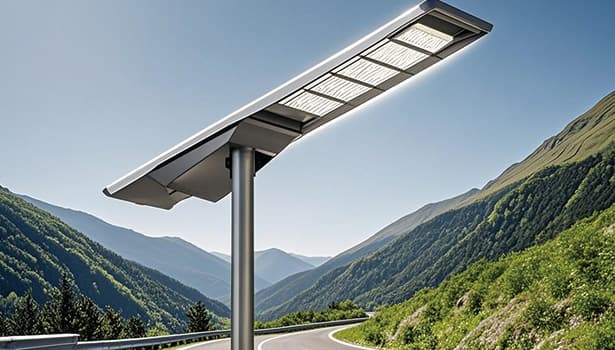
Applications of Commercial Solar Lights
Public Area
Street lighting
Urban street lighting is an important application area for commercial solar lighting. By installing solar street lights, municipalities have significantly reduced lighting costs while improving road safety. For example, the main roads in some cities in China have been replaced with solar streetlights on a large scale, saving millions of dollars in electricity and maintenance costs each year, and realizing a win-win situation for both economic and social benefits.
Parks and recreational areas
Parks, trails and other recreational areas on the demand for lighting focus on the combination of aesthetics and practicality. The solar lighting system can provide soft lighting to protect the safety of nighttime visitors without destroying the original landscape for complex wiring. Its diversified lamps and lanterns design can also be integrated with the surrounding environment to enhance the overall aesthetics of the area.
Commercial Area
Parking lot lighting
Parking lots are popular scenes for commercial solar lighting applications. Bright lighting allows car owners to see the parking space and the surrounding environment more clearly, reducing scratching accidents; at the same time, good lighting also increases the sense of security in the parking lot, attracting more customers. In addition, the solar lighting system still works properly during power outages and can be used as emergency lighting.
Commercial building periphery
Installing solar lighting at the entrances, signs, and outdoor recreation areas of commercial buildings not only highlights the building's features and attracts customers' attention, but also creates a warm and friendly atmosphere. For example, the outdoor areas of hotels and restaurants are decorated with solar lights to show a unique style at night and enhance customers' consumption experience.
Special Scene
Construction site
The demand for temporary lighting in construction sites is flexible and convenient. The solar lighting system does not need to be connected to the temporary power grid of the construction site, and can be quickly installed and dismantled without being affected by power outages, which guarantees the safety and progress of the construction. Its energy-saving and environmentally friendly features also meet the requirements of green construction at modern construction sites.
Sports ground
Large sports venues such as soccer fields and basketball courts require high lighting intensity and coverage. Solar floodlights, with their high brightness and wide irradiation angle, can meet the lighting needs of sports events and daily training. At the same time, solar power avoids high electricity bills and saves costs for venue operators.
Considerations for Implementing Commercial Solar Lighting
Site Assessment
A scientific site assessment is fundamental before installing a commercial solar lighting system.
Lighting conditions are a central consideration - ensure that the solar panels receive ≥ 6 hours of light per day, and avoid shadows from buildings, tall trees, and other obstructions. In addition, parameters such as geographical latitude (e.g. high latitude areas need to focus on winter light hours) and climatic characteristics (rainy / snowy areas need to optimize the tilt angle to prevent dust accumulation) will directly affect the conversion rate of light energy. By using professional survey tools (e.g. light emissivity meter) to map the sunshine, the angle and layout of mounting can be precisely determined to maximize the power generation efficiency.
Budget Planning and Financing
Although commercial solar lighting has significant whole-life cost advantages, its initial equipment procurement (PV panels, lithium batteries, LED lamps) and installation costs are high.
Enterprises need to develop a detailed budget that includes ** equipment costs (60%), installation and commissioning (15%), and a maintenance fund (10%)**. At the same time, they can actively apply for government green energy subsidies (e.g., U.S. ITC tax credits, local subsidies in China), bank green credits (with interest rates as low as 3.5%), and other policy support to reduce the pressure of initial investment. According to EnergySage, proper use of incentives can shorten the payback period to 3-5 years.
Maintenance Management and Module Lifetime
Commercial solar lighting systems require a cyclical maintenance mechanism to ensure stable operation for 25+ years.
Solar panel maintenance: quarterly cleaning of surface dust, bird droppings and other debris can improve power generation efficiency by 5-8%;
Battery management: lithium batteries are recommended to be replaced every 5-7 years, and lead-acid batteries need to be tested for acid density every 3 years to avoid over-charging and over-discharging;
Intelligent monitoring: access to a remote management system (e.g., IoT sensors) to provide real-time early warning of module failures and to reduce the cost of manual inspections.
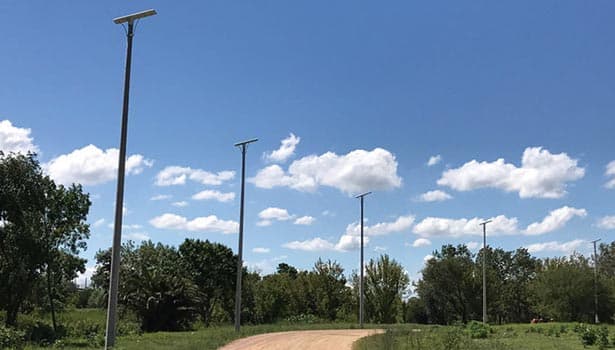
Industry Challenges and Innovative Solutions
Technological breakthroughs in areas with insufficient light
High-density building complexes or areas covered by vegetation, where the effective light duration of solar panels is often less than 4 hours/day.
Solutions include:
Accurate site selection: GIS is used to screen open land and avoid midday shaded areas;
Dynamic light tracking technology: dual-axis tracking brackets are installed to keep PV panels perpendicular to the sun's rays, which can increase power generation by 30%;
Hybrid power supply system: a small wind turbine or a grid backup power supply is used to ensure the stability of illumination in consecutive cloudy and rainy days.
Energy Storage Technology Upgrade and Cost Control
Currently, the cost of lithium batteries accounts for 30-40% of the total system cost, which has become a bottleneck for popularization.
Industry innovations include:
sodium-ion battery R & D: Ningde Times and other companies have introduced sodium batteries with an energy density of 160Wh/kg, the cost is 30% lower than lithium;
laddering system: decommissioned power batteries (≥ 80% capacity) used in the energy storage system to reduce the initial investment;
shared battery model: through the leasing platform to achieve the management of the battery clusters, the user pays for the use of the amount to reduce the pressure of a one-time investment.
Scenario-based customization program
Different commercial scenarios have significant differences in lighting parameter requirements:
Parking lot/industrial area: equipped with 100-150Lux high-brightness floodlights with motion sensor to achieve human-vehicle sensing and dimming;
Park/walking street: 30-50Lux warm-light garden lights, integrated PIR human body sensing and Timer function, taking into account energy saving and ambience creation; Highway/airport: 30-50Lux warm-light garden lights, integrated PIR human body sensing and Timer function. Highways/airports: deploy IP68-rated explosion-proof fixtures that support remote cluster control and self-diagnosis of faults.
Technology Integration and Cost Optimization Path
The addition of intelligent control modules (e.g., LoRa wireless networking, AI energy management) can improve energy efficiency by 20%, but at an initial cost increase of 15-20%.
Balancing strategies include:
Modular design: integrate controllers and inverters into the base of poles to reduce cable costs and installation labor hours;
Scale effect application: when purchased in bulk for municipal projects, the cost of smart components can be reduced by 10-15%;
Long-term value orientation: smart systems can reduce labor costs by 50% through remote operation and maintenance, and cover the new investment within 5 years.
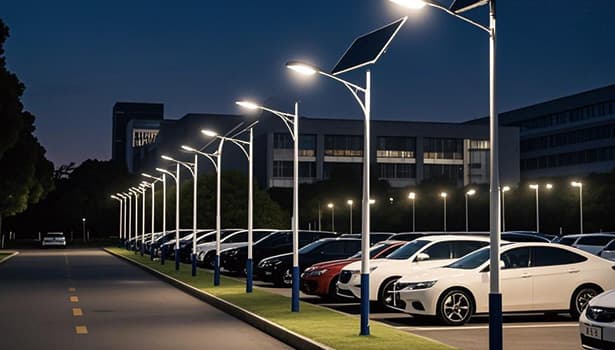
Summary
Commercial solar lighting is being upgraded from “optional energy-saving program” to “just-demanded sustainable development configuration”. With the efficiency of photovoltaic panels exceeding 25%, the cost of energy storage continues to decline, and the popularization of ESG (environmental, social, corporate governance) investment philosophy, its penetration in the retail shopping district, logistics parks, cultural and tourism scenic spots and other scenes will accelerate. Whether it is the endogenous drive of enterprises to pursue cost reduction and efficiency, or the external drive of the global carbon neutral goal, commercial solar lighting will occupy a key position in the smart energy revolution. Through technological innovation, policy synergy and deep cultivation of scenes, this green lighting program will continue to illuminate the sustainable development of commercial space.

